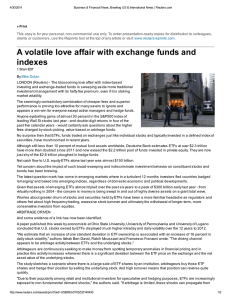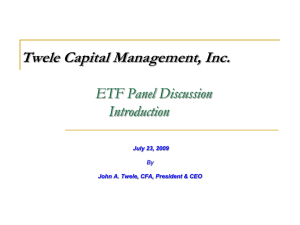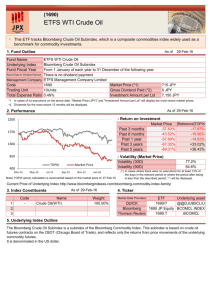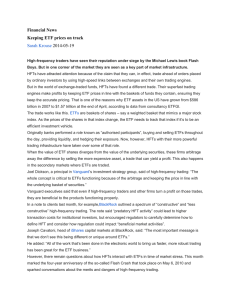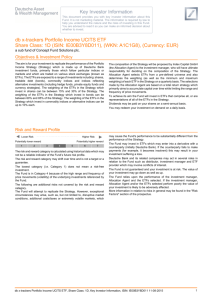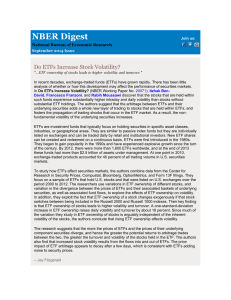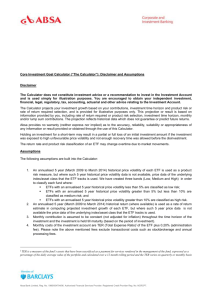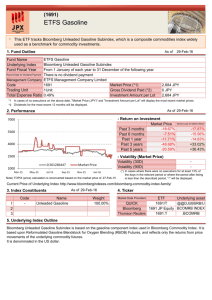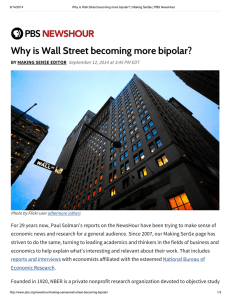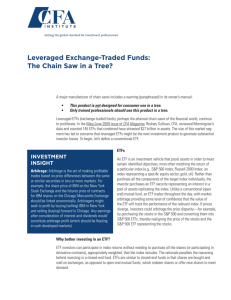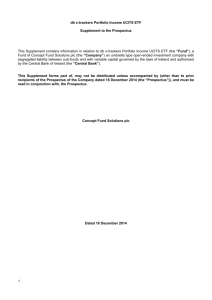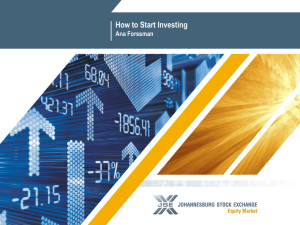Apr 8th, 2013 Canadian-listed exchange
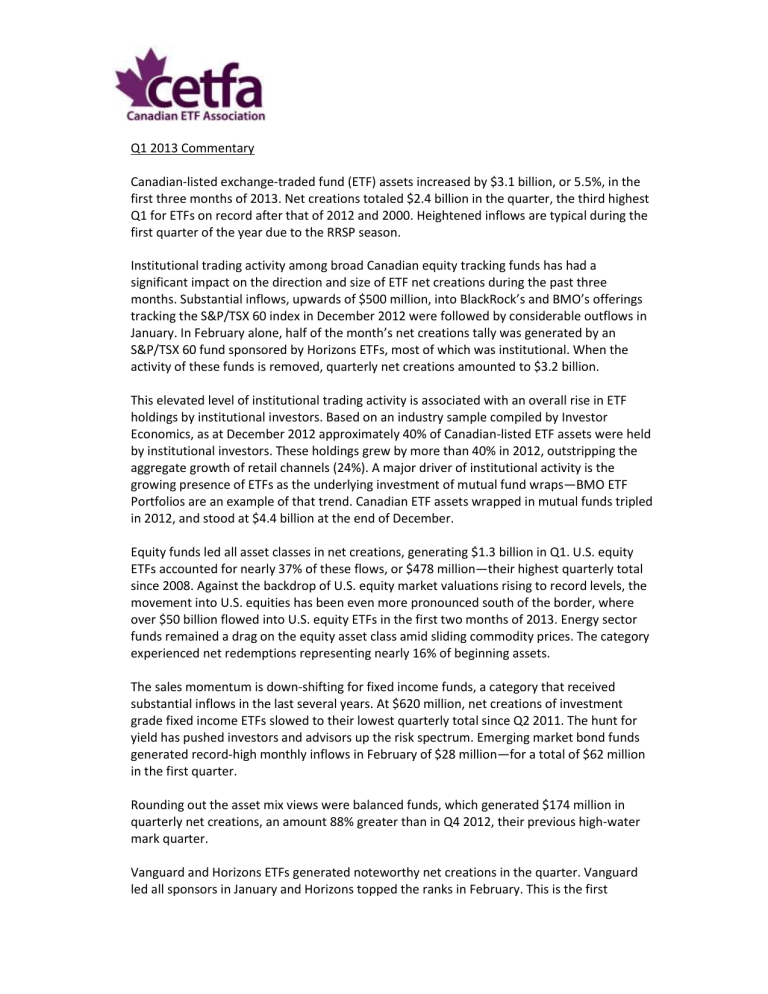
Q1 2013 Commentary
Canadian-listed exchange-traded fund (ETF) assets increased by $3.1 billion, or 5.5%, in the first three months of 2013. Net creations totaled $2.4 billion in the quarter, the third highest
Q1 for ETFs on record after that of 2012 and 2000. Heightened inflows are typical during the first quarter of the year due to the RRSP season.
Institutional trading activity among broad Canadian equity tracking funds has had a significant impact on the direction and size of ETF net creations during the past three months. Substantial inflows, upwards of $500 million, into BlackRock’s and BMO’s offerings tracking the S&P/TSX 60 index in December 2012 were followed by considerable outflows in
January. In February alone, half of the month’s net creations tally was generated by an
S&P/TSX 60 fund sponsored by Horizons ETFs, most of which was institutional. When the activity of these funds is removed, quarterly net creations amounted to $3.2 billion.
This elevated level of institutional trading activity is associated with an overall rise in ETF holdings by institutional investors. Based on an industry sample compiled by Investor
Economics, as at December 2012 approximately 40% of Canadian-listed ETF assets were held by institutional investors. These holdings grew by more than 40% in 2012, outstripping the aggregate growth of retail channels (24%). A major driver of institutional activity is the growing presence of ETFs as the underlying investment of mutual fund wraps—BMO ETF
Portfolios are an example of that trend. Canadian ETF assets wrapped in mutual funds tripled in 2012, and stood at $4.4 billion at the end of December.
Equity funds led all asset classes in net creations, generating $1.3 billion in Q1. U.S. equity
ETFs accounted for nearly 37% of these flows, or $478 million—their highest quarterly total since 2008. Against the backdrop of U.S. equity market valuations rising to record levels, the movement into U.S. equities has been even more pronounced south of the border, where over $50 billion flowed into U.S. equity ETFs in the first two months of 2013. Energy sector funds remained a drag on the equity asset class amid sliding commodity prices. The category experienced net redemptions representing nearly 16% of beginning assets.
The sales momentum is down-shifting for fixed income funds, a category that received substantial inflows in the last several years. At $620 million, net creations of investment grade fixed income ETFs slowed to their lowest quarterly total since Q2 2011. The hunt for yield has pushed investors and advisors up the risk spectrum. Emerging market bond funds generated record-high monthly inflows in February of $28 million—for a total of $62 million in the first quarter.
Rounding out the asset mix views were balanced funds, which generated $174 million in quarterly net creations, an amount 88% greater than in Q4 2012, their previous high-water mark quarter.
Vanguard and Horizons ETFs generated noteworthy net creations in the quarter. Vanguard led all sponsors in January and Horizons topped the ranks in February. This is the first
instance where either firm topped monthly inflow totals. Meanwhile, strong March inflows helped BMO end the quarter with $1.1 billion in net creations, making the bank the bestselling sponsor.
ETF launch activity has ramped up again in 2013. First Trust Portfolios Canada is set to become the latest firm to enter the Canadian ETF segment. The company filed a preliminary prospectus for five ETFs focusing on domestic and international equity mandates. BMO introduced seven new ETFs, their latest bulk release since November. These funds cover areas such as provincial bonds, U.S. equity income, U.S. low volatility equity and U.S. corporate bonds. In early April, BlackRock introduced two international equity funds focusing on the global industrial and consumer discretionary sectors. Other new ETFs include S&P/TSX
60 covered call and broad commodity funds launched by Horizons ETFs and a provincial bond fund introduced by First Asset.
